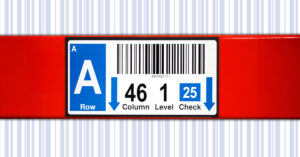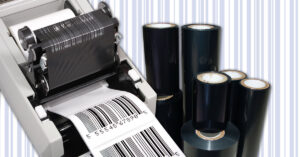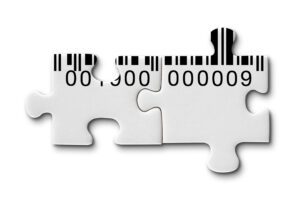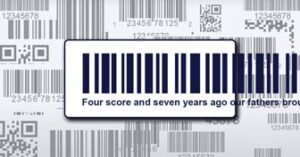Explaining the Different Barcode types
Here’s an easy way to understand how barcodes work: think of them as a more technologically savvy way to transfer strings of characters. They are basically a license plate that is linked to data files.
These strings of characters can designate all types of information. Rather than manually writing and copying this information, it becomes encrypted in barcode languages (symbologies) for fast transfer through a scanner to computer. Each symbology follows an algorithm for standardizing the encoding and storing of these characters.
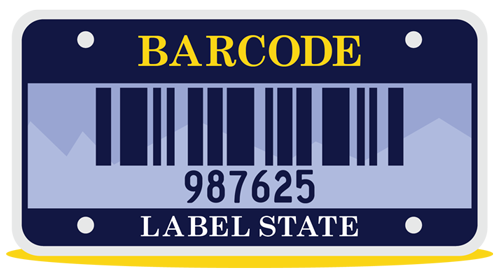
Speaking Another Language
Barcode Symbologies differ in qualities such as capacity and linearity, making some advantageous for particular uses and industries. Barcode technology never stops advancing. For instance, the recent surge of 2D barcoding has proven popular by allowing you to scan straight from your smartphone for a wealth of data. Why not learn more about how barcodes can better serve you?
Code 39
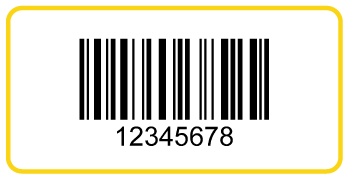
This is one of the oldest barcodes around and is a common symbology found in electronics, healthcare, and government. It is a lineal, 1D, alphanumeric code with the ability to include the entire 128 ASCII character set and extend to any length, only limited by the size of the label. If space is a concern, Code 128 would be a better choice to consider.
Code 128
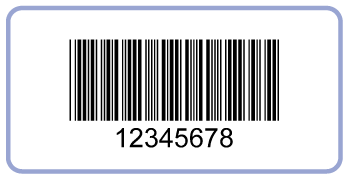
Derived from the ASCII 128 character set (0-9, a-z, A-Z, and some special characters), this compact barcode is used extensively in packaging and shipping applications worldwide. Code 128 features an automatic switching setting that allows users to optimize it for barcode length.
Interleaved 2 of 5

Commonly found in warehouse, distribution, and manufacturing, Code I 2 of 5 is a numeric-only barcode used to encode pairs of numbers. Every two digits are paired to create one symbol. The number of digits used must be even for this format to work, so a zero is commonly added at the end of an odd set of numbers.
Universal Product Codes (UPC)
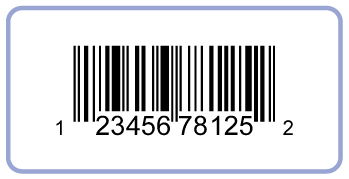
Found on nearly every retail product, these barcodes were originally created for grocery stores to provide quick receipt printing and inventory tracking. After securing a UPC number, a manufacturer will receive a unique company number to combine with their individual product numbers.
International Article Number (EAN)

Considered a superset of the UPC, these barcodes are used specifically by booksellers, libraries, universities and wholesalers for book traceability. These 13-digit codes are created from the International Standard Book Numbers (ISBN) for each respective book tracked. Like UPCs, these are standardized for the unique identification of publishers.
PDF417
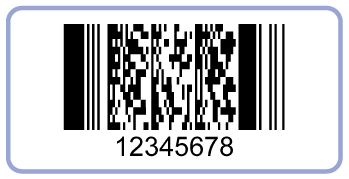
This stacked, linear 2D barcode can be found in many types of identification such as your driver’s license. It is the also the chosen standard by the USPS and Department of Homeland Security due to its advanced capabilities, such as encoding links to more than one data file. However, it can be expansive in size – 4 times larger than other 2D barcodes such as Datamatrix and QR Codes.
Data Matrix

This has become one the most common 2D barcodes. It is a square in shape code and can encode large – as in huge – amounts of information in a very small space; it is very popular in electronics manufacturing and healthcare for that reason. 2D codes require sophisticated scanners, such as smartphones, to basically “take a picture” and translate the entire image at one time. When companies need more barcode storage capacity, 2D barcodes reign supreme over their 1D counterparts.
Quick Response (QR) Codes
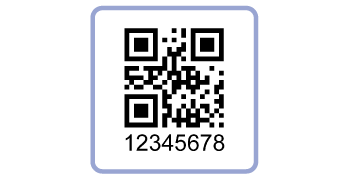
The latest trend in barcoding, QR Codes are gaining popularity as marketing tools to link to web based information. Not as compact as Data Matrix, you will find them often used on advertising materials and storefronts, linking to special promotions or details about a certain product.
Feeling educated? Contact The Label Experts to get your free samples today!
While our guide may be useful, nothing can replace speaking 1-on-1 with one of The Label Experts. We can offer assistance to answer your barcode labeling needs. Before consulting with us, check out this page and our complementary Getting Started guide to help steer you in the right direction. The more info you know about your label application, the quicker we can match you to the right product. We are excited to assist you and help come to a solution for your barcode labeling needs.

